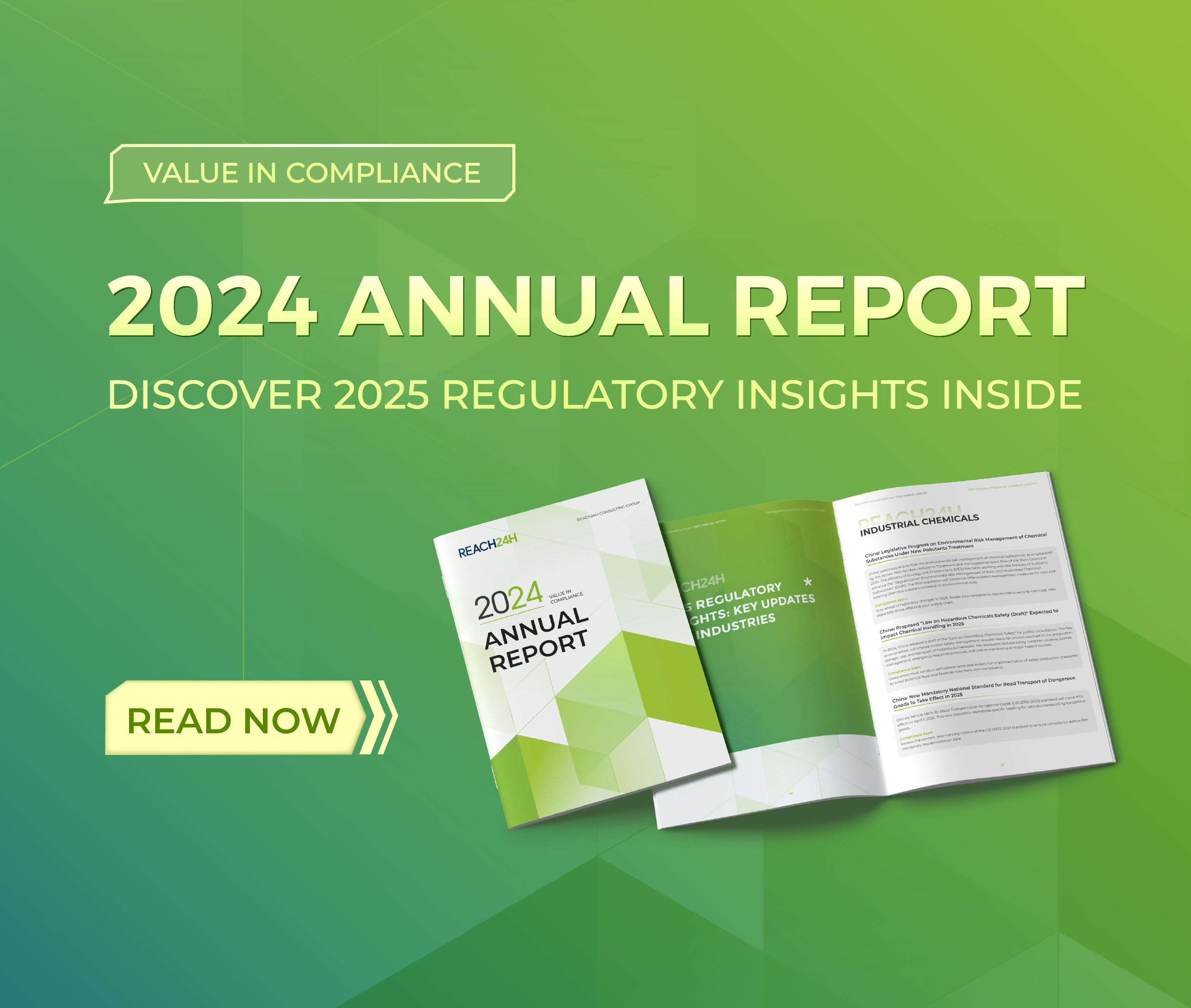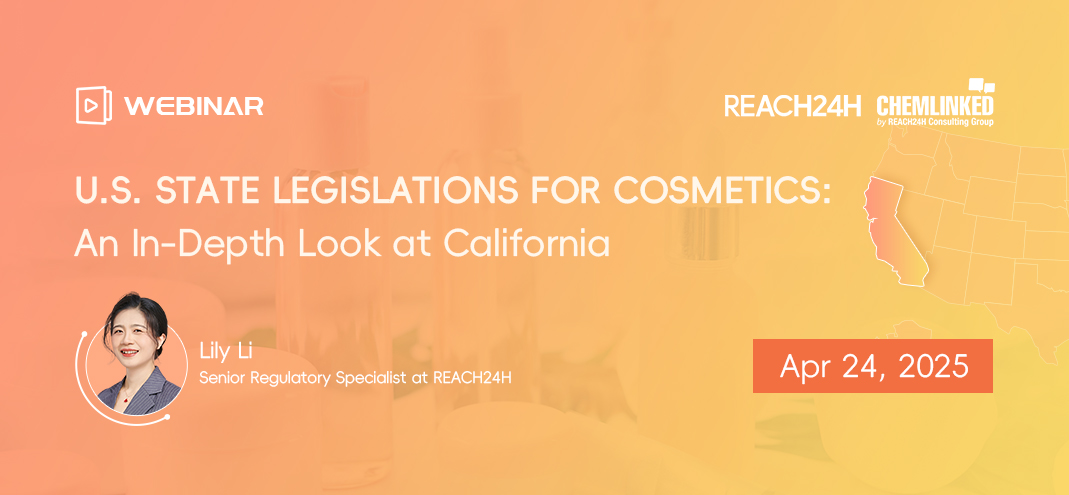Food Contact Notification (FCN) News in March
According to FDA official website, 7 food contact notifications (FCN) have been approved by FDA in March, and their information is shown in the table below:
|
Notifier |
Effective Date |
Name of The Substance |
Intended Use |
Limitations/Specifications |
|
Kaneka North America LLC |
Mar 5, 2018 |
Poly((R)-3-hydroxybutyric acid-co-(R)-3-hydroxyhexanoic acid) (CAS Reg. No. 198007-37-3) |
For use in the manufacture of food contact materials, except for use in contact with infant formula and human milk (see Limitations/Specifications). |
Articles composed of the FCS may be used in contact with food types I-V, VIA, VIB, and VII-IX under Conditions of Use B through H as described in Tables 1 and 2. The FCS is not for use in contact with infant formula and human milk. Such uses were not included as part of the intended use of the substance in the FCN. |
|
COIM USA Inc. |
Mar 16, 2018 |
Polyester-polyurethane adhesive formulated from the following: Benzene, 1,1′-methylenebis[isocyanato (CAS Reg. No. 26447-40-5); hydrocinnamic acid 3,5-di-t-butyl-4-hydroxyoxtadecyl ester(CAS Reg. No. 2082-79-3); 1,6-Hexanediol (CAS Reg. No. 629-11-8); 2,2-Dimethyl-1,3-propanediol (CAS Reg. No. 126-30-7); Hexanedioic acid (CAS Reg. No.124-04-9); diethylene glycol (CAS Reg. No. 111-46-6); α-Hydro-ω-hydroxypoly[oxy(methyl-1,2-ethanediyl)] (CAS Reg. No. 25322-69-4); 1,3-Benzenedicarboxylic acid (CAS Reg. No. 121-91-5); 1,3-Isobenzofurandione (CAS Reg. No. 85-44-9); Dipropylene glycol (CAS Reg. No. 25265-71-8); Trimethylolpropane (CAS Reg. No. 77-99-6); Oxirane, 2-methyl-, polymer with α-hydro-ω-hydroxypoly[oxy(methyl-1,2-ethanediyl)] and 1,1′-methylenebis[isocyanatobenzene] (CAS Reg. No. 167883-19-4); 1,3-Propanediol, 2-methyl- (CAS Reg. No.2163-42-0). |
For use as an adhesive in laminate structures that are intended for use in contact with all types of food, except for use in contact with infant formula and human milk (see Limitations/Specifications). |
The adhesive may be applied as a non-food contact layer at a maximum rate of 2.4 grams per square meter (2.4 g/m2) of laminate surface area. The food-contact layer separating the FCS from food will be a minimum of 1 mil thick and will be comprised of low density polyethylene (LDPE) or another polymer with equal or greater barrier properties. Laminate structures using the FCS may be used in contact with all food types under Conditions of Use A through H, as described in Table 2. The finished food contact articles containing the FCS are not for use in contact with infant formula and human milk. Such uses were not included as part of the intended use of the substance in the FCN. |
|
LANXESS Corporation |
Mar 19, 2018 |
Copolymers of acrylonitrile, methyl acrylate, divinylbenzene, ethylvinylbenzene, and 1,7-octadiene, reacted with 3-(dimethylamino)-1-propylamine and chloromethane. |
As a resin in food-contact applications to treat food solutions (see Limitations/Specifications). |
The finished resin is intended for repeat use in the processing of food solutions of sugar, sweeteners, pectin, gelatin, polyols, and whey; fruit juice; organic food acids; and wine. |
|
Mitsubishi Gas Chemical Company, Inc. |
Mar 23, 2018 |
Hexanedioic acid polymer with 1,3-benzenedimethanamine (CAS Reg. No. 25718-70-1) |
As the basic polymer in the manufacture of articles intended to contact food, except for use in contact with infant formula and human milk (see Limitations/Specifications). |
Articles containing the FCS may be used in contact with all types of food under Conditions of Use A through H, as described in Tables 1 and 2, respectively. The FCS may contain optional adjuvants permitted for use in nylon resins complying with 21 CFR 177.1500, subject to the prescribed limitations and specifications in the authorizing regulation or notification. The FCS is not for use in contact with infant formula and human milk. Such uses were not included as part of the intended use of the substance in the FCN. |
|
Agri-Neo Inc. |
Mar 25, 2018 |
An aqueous mixture of peroxyacetic acid (CAS Reg. No. 79-21-0), hydrogen peroxide (CAS Reg. No. 7722-84-1), acetic acid (CAS Reg. No. 64-19-7), sulfuric acid (CAS Reg. No. 7664-93-9), and 1-hydroxyethylidine-1,1-diphosphonic acid (CAS Reg. No. 2809-21-4). REPLACES FCN 1743 |
As an antimicrobial agent for use as a spray on seeds for sprouting (alfalfa, clover, broccoli, flax, and chia) as well as select edible seeds (chia, flax, and hemp) and nuts (almond, cashew, and walnut). |
The components of the FCS application mixture will not exceed 229 parts per million (ppm) peroxyacetic acid (PAA), 1043 ppm hydrogen peroxide (HP), and 25 ppm 1-hydroxyethylidene-1,1-diphosphonic acid (HEDP) on treated seeds and nuts. The FCS will be applied in the preparing, packing, or holding of the food for commercial purposes, consistent with the FD&C Act section 201(q)(1)(B)(i) but not applied for use under 201(q)(1)(B)(i)(I), 201(q)(1)(B)(i)(II), or 201(q)(1)(B)(i)(III). The treated edible seeds can be consumed directly or further processed into flour, protein, or oil. The treated edible nuts are intended to be consumed as nuts. The treated seeds for sprouting are intended to be consumed as sprouts. |
|
Heubach Colour Pvt Ltd. |
Mar 30, 2018 |
Phthalimidomethyl copper phthalocyanine (CAS Reg. No. 68411-06-3) |
As a colorant in polymeric food packaging, except for use in contact with infant formula and human milk (see Limitations/Specifications). |
The FCS is intended for use at levels not to exceed 0.45 percent by weight in single-use polymeric food packaging. Packaging containing the FCS may contact food types I, II, IVB, VIA, VIB, VIC, VIIB and VIII under Conditions of Use E through G as described in Tables 1 and 2. The FCS is not for use in contact with infant formula and human milk. Such uses were not included as part of the intended use of the substance in the FCN. |
|
Kirin Company, Ltd. |
Mar 31, 2018 |
Amorphous SiOC coating applied by catalytic chemical vapor deposition, utilizing vinylsilane (CAS Reg. No. 7291-09-0) as the starting material |
As a barrier for polyethylene terephthalate (PET), polyethylene (PE), and polypropylene (PP) bottles intended for single-use in contact with food, except for use in contact with infant formula and human milk (see Limitations/Specifications) |
For use at a maximum thickness of 0.1 micrometers. The finished bottles may contact all food types under Conditions of Use A through H as described in Table 2. The FCS is not for use in contact with infant formula and human milk. Such uses were not included as part of the intended use of the substance in the FCN. |
REACH24H has extensive experience in United States food contact materials (FDA /FCN / 21 CFR), EU food contact materials (EU 10/2011/BfR) and China food contact materials (GB 9685, GB 4806.X). We have the capability to advise and identify a regulatory strategy for successful registration.
If you require any further information, please contact
Ms. Mao
+86-571-87007037


